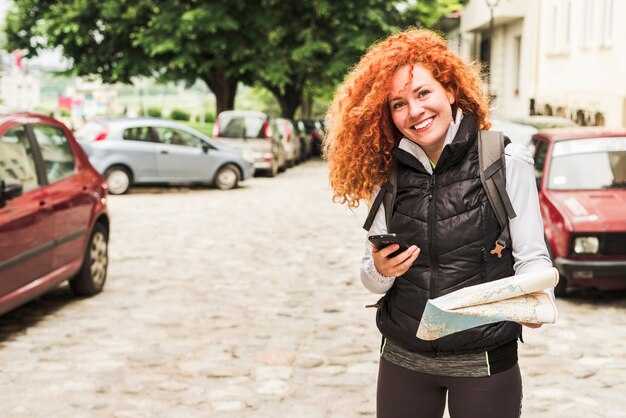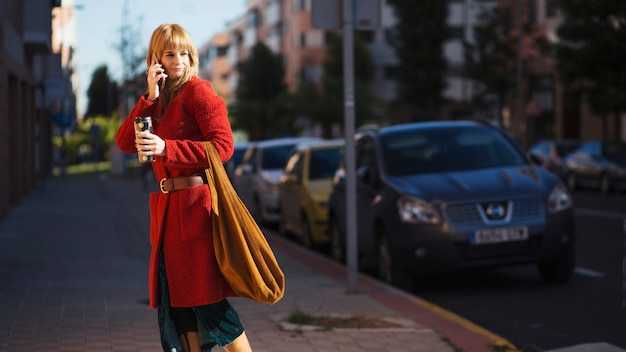To start, book ahead with licensed taxis or official apps to lock in a reliable fare. In the Netherlands, these websites and apps reveal the average tarifas, typical chargesy el minutes you’ll spend in transit, helping viajeros gauge the cost before they travel. When you arrive, you can opt for a clearly priced ride instead of flagging down a taxi on the street. weve tested several providers and found that these options consistently save time and money.
Expect a base fare around €3–€4, then about €1.80–€2.50 per kilometer and €0.30–€0.60 for each minute of waiting; these charges reflect normal city rides. A typical ride from Amsterdam Central to Schiphol averages €40–€60 in daytime, rising by around 20% at night or during peak traffic.
Airport pickups often carry a surcharge of about €5–€8; intercity trips follow higher charges en el surroundings of airports and during evenings and weekends. If you booked earlier, the app will display a forecasted total before you confirm. Use licensed taxis or trusted apps to ensure clear receipts and fair tarifas.
Be cautious and verify the meter or upfront quote before you start. If a driver offers a fixed price that seems too high, compare with the app estimate or another licensed option. These steps help travelers stay cautious and informed in the country.
In major cities, you’ll find sharing rides and traditional taxis; compare options on websites y transporte apps. If you’re curious about rides like uber or local equivalents, check availability in your destination and read local websites for current terms and minimum fares. For travelers who want predictable costs, ask the driver for an estimated fare before departure, and consider a fixed-rate option if offered by the app.
Fare Structures: Understanding Metered Taxis, Flat Rates, and Uber Pricing in Dutch Cities
Check the price estimate in the taxi app before you ride; this simple step helps you choose the best option for your location and plans–metered taxis, flat-rate transfers, or Uber–without surprises when you arrive. Save the file for offline reference.
Metered taxis in Dutch towns use a base fare plus distance and time, with values that vary by city. In normal conditions, expect a base of about €3.50–€4.50, €1.80–€2.50 per kilometer, and €0.40–€0.90 per minute of waiting. Those figures can rise at night or with extra luggage. When you’re near central neighborhoods, you’ll typically reach your destination faster than you expect, and you can walk to nearby transit stops if you prefer.
Flat-rate options appear mainly for airport runs and some intercity connections. A Schiphol to Amsterdam center transfer often falls in the €35–€45 range, while longer airport hops to nearby towns may vary by operator and distance. Always confirm the flat price in the app or with the driver before departure, and use it when you want predictable costs, especially if you’re traveling with bulky bags.
Uber pricing blends a base fee, per-kilometer and per-minute charges, plus occasional surge. In major towns, look for roughly €1.50–€2.50 as the base, €0.60–€1.30 per kilometer, and €0.15–€0.40 per minute. Surge multipliers can push rates higher during peak times or events, so a ride in the city center may cost more. For short trips within the city, UberX often provides a competitive option when you compare with a meter or a fixed-rate ride.
In this article, use the price estimates to compare options and tell your plan to a friend. You can find better values by comparing across options. While rides can be convenient, wiser choices save money: if you’re near your hotel and the distance is short, walking or using a bicycle for short hops is often cheaper and faster. Those routes work well when you can bike along bike lanes or cycle-friendly streets in your location, and using bicycles can be a better option than a taxi on light traffic days.
источник: local transit guides and user feedback note these patterns and emphasize airport fixed rates and city-specific variations. They remind you to verify the current price before boarding and to avoid unlicensed drivers by choosing licensed taxis or rideshare services through official apps.
Where to Hail a Ride: Airport Taxis, Train Stations, and City Hubs in Amsterdam and Beyond

Always use the official taxi stand outside Schiphol arrivals for a meter-based ride that comes with a clear bill. If you value reliability, this is definitely the quickest way to start in Amsterdam.heres a quick rule: pick the stand with a clearly displayed plate, confirm the location and the company, and agree on the estimated fare before you sit. Outside the airport and at major hubs you’ll find multiple options, but the stand guarantees a fair meter rate and helps avoid surcharges. Weve found that reading the plate and sticking to licensed drivers gives you a safer, smoother experience and a better chance of a fair bill.
Airport Taxis: Schiphol and Major Hubs
Schiphol’s official stands are located just outside the arrivals area. The meter starts with a base fare and then per-kilometer charges apply; a ride to Amsterdam’s center typically costs €35-€50, depending on traffic. If a driver offers a fixed price, compare it to the meter estimate because surcharges may apply during late-night hours or holidays. Have your destination ready to avoid delays and confirm the vehicle’s plate and company before you submit payment. If you notice a bolt icon on the meter or payment screen, it usually signals a card option, so ask for the receipt and note the charge details.
Train Stations and City Hubs: Amsterdam and Nearby Towns
Outside train stations such as Amsterdam Centraal and Sloterdijk you’ll see official taxi ranks with multiple firms offering service. For short trips within Amsterdam, a ride from Centraal to Dam Square often falls in the €10-€20 range; longer routes or peak traffic push the price higher. In towns located near Amsterdam–Haarlem, Leiden, Utrecht, Rotterdam–taxis are also available at stations and central squares; fares rise with distance and time. To avoid surprises, tell the driver your exact location (address or landmark) and request a clear quote before you submit payment. Information on the meter and the company helps you agree on a fair rate, and keeping the plate visible makes it easy to verify later if needed. This setup gives you a relatively straightforward option at each location, with multiple firms offering service and the chance to agree on the best rate before you ride.
| Ubicación | Where to Find | Typical Cost to City Center | Notas |
|---|---|---|---|
| Schiphol Airport (AMS) | Official taxi stand outside arrivals | €35-€50 | Meter-based; base fare applies; surcharges may occur late night/holidays; read plate |
| Amsterdam Centraal | Outside main entrance | €10-€20 (to central areas) | Short, reliable rides; official stand available |
| Haarlem Central | Outside main station | €30-€60 | Nearby town; higher fare with longer distance |
| Utrecht Centraal | Outside main hall | €60-€90 | Longer distance; meter-based pricing applies |
| Rotterdam Centraal | Outside main station | €80-€120 | Significantly longer ride; use licensed stand |
Payment Methods and Tipping: Cash, Card, Contactless, and Gratuity Guidelines

Use card or contactless payments on every ride; it speeds up the stop and you get a receipt for costs during sightseeing around the city.
Accepted payments vary by company and location, but you will typically find these options:
- Cash is still accepted by many drivers, though some firms prefer electronic payments.
- Card payments, including debit and credit, are widely supported and convenient for most travelers.
- Los pagos sin contacto con tarjeta o monedero de teléfono inteligente (Apple Pay, Google Pay) funcionan en la mayoría de los taxis y suelen ser más rápidos.
- Algunos taxis aceptan aplicaciones locales o pagos con código QR; tener tanto tarjeta como efectivo asegura que puedes completar un viaje si un método falla.
Los taxis del aeropuerto de Schiphol generalmente muestran la tarifa por adelantado; verifique la tarifa en el taxímetro, especialmente para los traslados al aeropuerto, donde puede aplicarse un recargo. Las tarifas están reguladas por la ciudad, con una tarifa base más cargos por kilómetro y tiempo de espera. Los rangos típicos son una tarifa base de alrededor de 3 a 4 euros, aproximadamente entre 1,5 y 2,5 euros por kilómetro y alrededor de 0,3 a 0,6 euros por minuto de espera. Las tarifas nocturnas o las rutas específicas pueden agregar pequeños cargos adicionales.
Pautas sobre propinas: dar propina no es obligatorio en los Países Bajos, pero redondear o añadir un 5-10% por un buen servicio es común. Si viajas con una empresa que lo permite, puedes añadir una propina en la pantalla de pago; de lo contrario, las propinas en efectivo son perfectamente aceptables. En las bulliciosas calles y en Ámsterdam, los conductores locales suelen mostrar su agradecimiento con una pequeña propina después de un traslado sin problemas. Si una tarifa parece inesperadamente alta, puedes presentar una reclamación ante la empresa; la mayoría de las empresas resuelven las disputas y los reembolsos cuando están justificados.
Seguridad y Legitimidad: Verificación de Conductores, Revisiones de Vehículos y Qué Hacer Si Algo No Se Siente Bien
Siempre verifica la identidad del conductor y el vehículo antes de entrar. En los Países Bajos, los taxis pertenecen a una red de confianza y operan con identificaciones de conductor claras y placas visibles. Si hiciste un pedido a través de un centro o aplicación, compara los detalles en la pantalla con lo que está dentro del coche y en la insignia, y solo procede si coinciden; ahí hemos añadido una comprobación rápida para confirmar.
Solicite un viaje con taxímetro o una opción de precio fijo antes de que comience el viaje. El precio con taxímetro es normal y ayuda a evitar sorpresas; si un conductor ofrece una tarifa más alta porque se encuentra en un centro concurrido o fuera del horario de atención, insista en la tarifa estándar y solicite un recibo.
Preferiblemente, realice los pagos con tarjeta o sin contacto; se sigue aceptando efectivo en algunos lugares, pero las opciones digitales reducen las disputas. Si puede, inicie el viaje con el método de pago preferido en la aplicación para tener un registro.
Si ocurre algo y el conductor dice algo contradictorio, deténgase en un lugar seguro y salga, especialmente si el coche toma una ruta desconocida o carece de un letrero de taxi. Podría pedirle al conductor que se detenga en un área bien iluminada y concurrida y usar una parada de taxis cuando sea posible.
Grabe e informe: anote los detalles específicos del automóvil, la placa y el nombre del conductor; tome una foto si está permitido; luego envíe o presente un informe al operador de taxi o a la autoridad de transporte local. Mantenga un archivo con los detalles del viaje como referencia en caso de que necesite disputar cargos.
En resumen: estas verificaciones son una práctica normal que protege a los pasajeros y a las personas. Existen opciones como paradas oficiales, envíos de empresas o pedidos de aplicaciones; en las ciudades de los Países Bajos, debe sentirse seguro del servicio que utiliza y puede evitar sorpresas si se atiene a proveedores de confianza.
Errores Comunes y Formas de Evitar Cargos Excesivos, Retrasos o Estafas
Recommendation: Consulta las tarifas locales antes de subirte usando la aplicación de taxis o el taxímetro del conductor. Si no estás seguro, pregunta por la tarifa estimada por adelantado. Esta simple comprobación evita sorpresas y protege tu presupuesto.
La mayoría de los sobrecargos ocurren cuando un conductor usa una ruta más larga o aplica recargos por aeropuerto o nocturnos. Antes de comenzar, repite tu idea de la ruta más corta y pide el estimado para todo el viaje; si la ruta parece más larga de lo esperado, haz una pausa y discute una opción más corta. Sin embargo, podrían responder de manera amigable, pero puedes darte control insistiendo en la distancia razonable más corta. Si no estás de acuerdo, puedes cambiar a una opción de viaje diferente.
Obtén un recibo completo al final; muestra las horas de inicio y fin, la distancia y el desglose de la tarifa. Si detectas alguna discrepancia, compárala con el registro de la aplicación y luego presenta una nota a la empresa o a tu banco si es necesario.
Paga con tarjeta o aplicación siempre que sea posible; el manejo de efectivo puede ser manipulado y deja menos rastro. Si pagas en efectivo, solicita el recibo y anota la identificación del conductor para que puedas presentar una reclamación más adelante.
Utiliza un enfoque guiado para mantener el control: comparte los detalles de tu viaje con alguien y verifica tu mapa para conocer la ruta real. Si se producen retrasos, pregunta por una hora estimada de llegada y considera alternativas como tranvías o autobuses para explorar tu visita y mantener tu día encaminado.
Estate atento a las estafas comunes: conductores que se niegan a usar el taxímetro, te presionan para que tomes una recogida anticipada prometiendo una tarifa inicial más baja o toman desvíos extraños. Toma una foto de la placa y la tarjeta de tarifa, proporcionando notas para que puedas presentar un informe si es necesario. Si insisten, finaliza el viaje y elige otra opción.
En este artículo, consulta los pasos prácticos para evitar errores comunes. En períodos de mucha actividad, reserva con anticipación o viaja más temprano para evitar la congestión y las largas esperas. Sus aplicaciones de guía pueden mostrarte los carriles preferidos y el tráfico, lo que te ayudará a decidir qué tomar: un viaje, o caminar, o usar un tranvía, autobús o viaje compartido en su lugar. Hay muchas opciones para que tu día siga avanzando sin problemas.



Comentarios